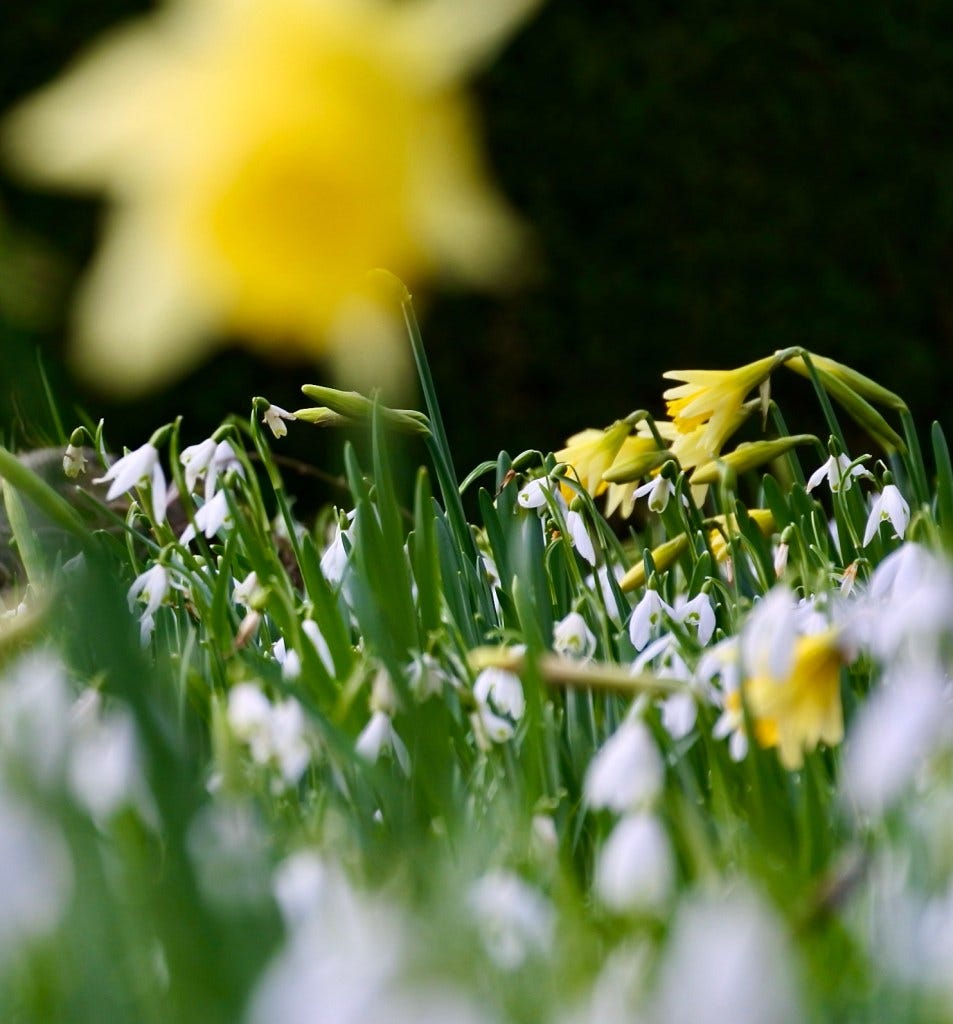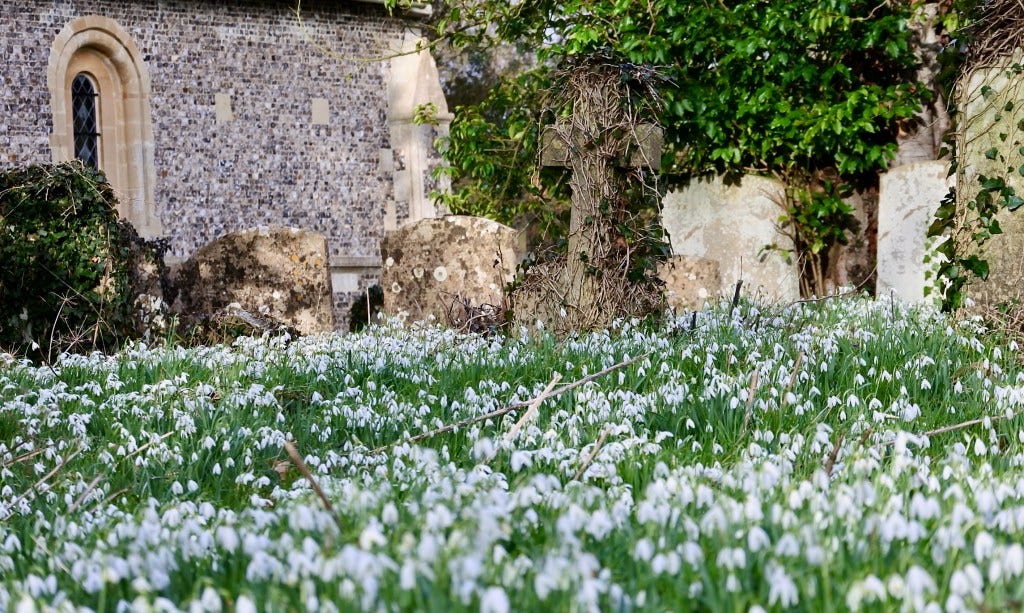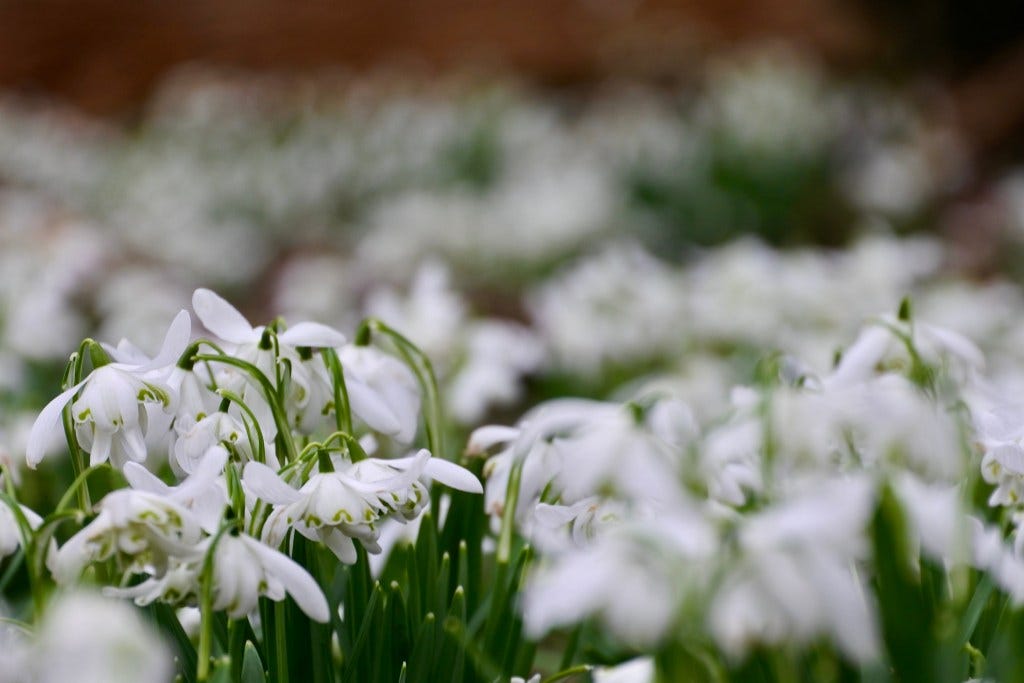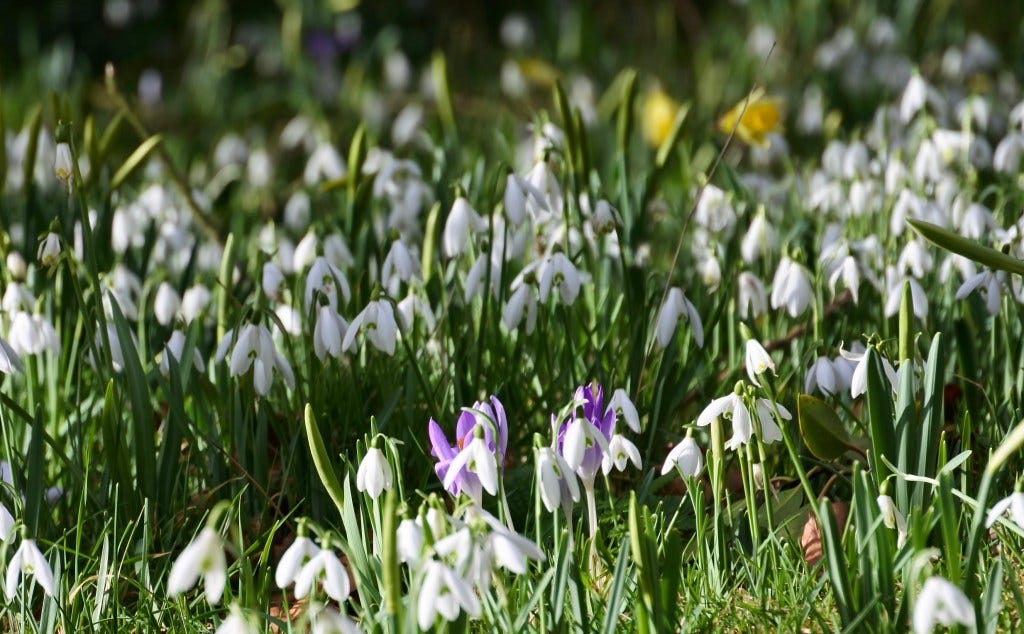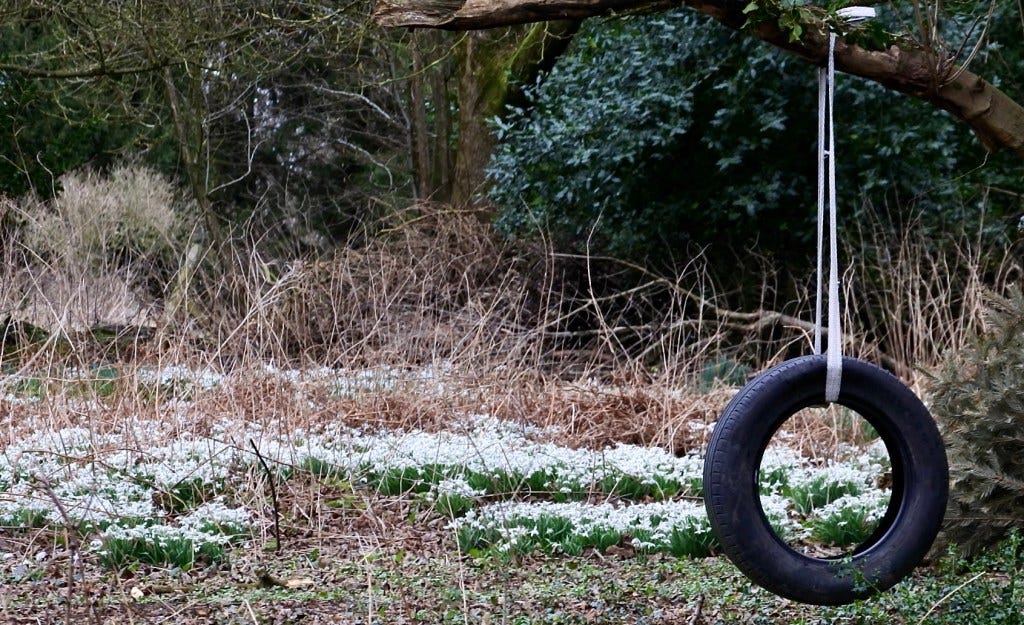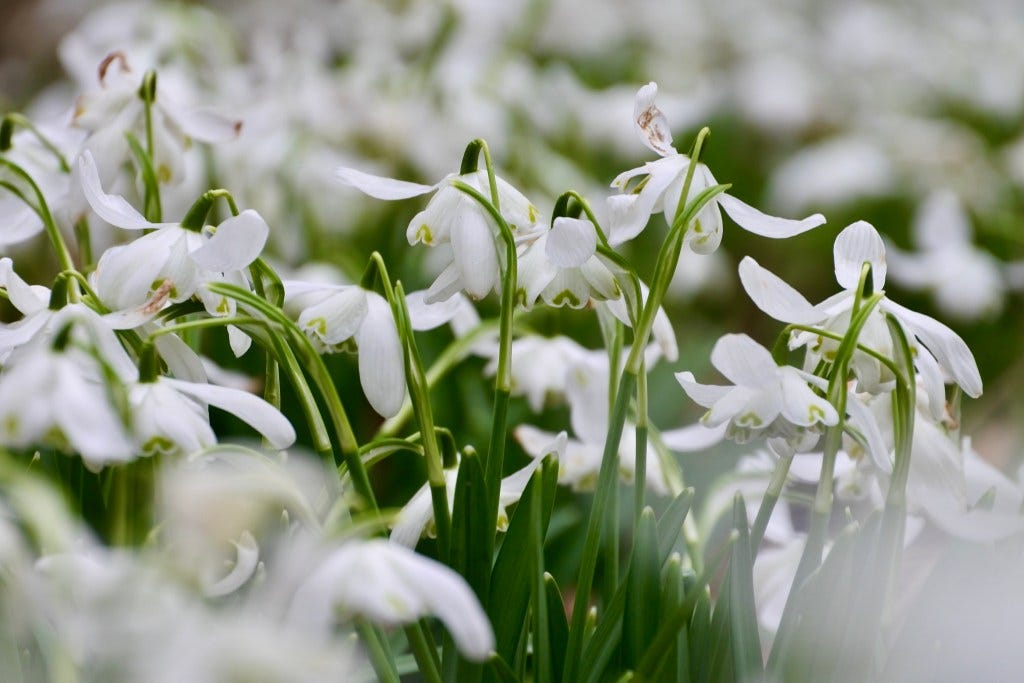A Snowdrop of Spring
Not really spring, but that testing time in-between winter and spring when we dare to hope that warm, sunshine-filled days are not far away.
February is the month when we see a smorgasbord of emerging colour; yellow aconites and daffodils, purple crocuses and best of all, clumps of white snowdrops.
They can be found across the Chilterns, in roadside clumps, National Trust parkland, in woodlands and cemeteries. And it’s the cemeteries where they are the most impactful, arranged prettily around decaying headstones and memorials.
These small plants are delicate, yet highly toxic, but for bees, drawn to the sparse nectar supplies, they love them!
Across Europe, there is myth and folklore associated with this tiny ‘shy’ plant. Renewal and hope being the more obvious associations, but for the Victorian’s, it was bad luck to see snowdrops as they believed death would surely follow. Snowdrops indoors are a definite no-no!
The galantamine alkaloid contained within the bulb has properties which affects cerebral function. It is in use among Alzheimer’s patients and is being studied as a potential treatment for HIV. Renewal surely?
Whatever you believe, death or renewal, the snowdrops are a welcome carpet of spring hope!
Further Inspiration
The snowdrops at St Botolph at Swyncombe are very pretty, and very popular.
Try this self-guided Swyncombe snowdrop walk with colleague Andrew Clark of the Chiltern Society.
Snowdrop and other Chilterns wildflower prints are available from our online Chilterns Gifts and souvenirs website.
The post A Snowdrop of Spring appeared first on Chiltern Hills.



